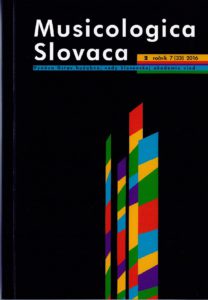The Pray Codex as a Source for Music History
The Pray Codex as a Source for Music History
Author(s): Zsuzsa CzagánySubject(s): Music, Local History / Microhistory, Middle Ages, History of Religion
Published by: SAV - Slovenská akadémia vied - Ústav hudobnej vedy Slovenskej akadémie vied
Keywords: liturgy; liturgical monody; plainchant manuscripts and fragments; medieval Hungary
Summary/Abstract: Since its discovery in 1770, the manuscript known as the Pray Codex has been a subject of particular interest in Hungarian cultural history. The codex was written in the 1190s and has been examined by scholars from many fields, who have approached it from many different points of view. Music history research has been primarily focussed on the Sacramentary, which makes up the corpus of the manuscript. The service book, containing the series of Mass prayers performed by a priest – oratio, secreta and postcommunio, is not one of the liturgical books of a musical genre. However, the Pray Codex is an extended sacramentary, with numerous texts and chants besides the prayers, and its content is closer to the genre of the gradual, processional and missale plenum. Written above the manuscript’s texts and on the margins are chants with neumatic and staff notations from the end of the 12th and the beginning of the 13th century, providing a unique glimpse into the birth and early development of the Esztergom notation (“Graner Choralnotation”). The following essay discusses the musical content of the Pray Codex within the history of plainchant in medieval Hungary and in Central Europe. Special attention is given to influences that affected the liturgy and chant in Hungary in its early formation period and to phenomena which became significant for the later evolution of the repertory.
Journal: Musicologica Slovaca
- Issue Year: 14/2023
- Issue No: 1
- Page Range: 7-34
- Page Count: 28
- Language: English

